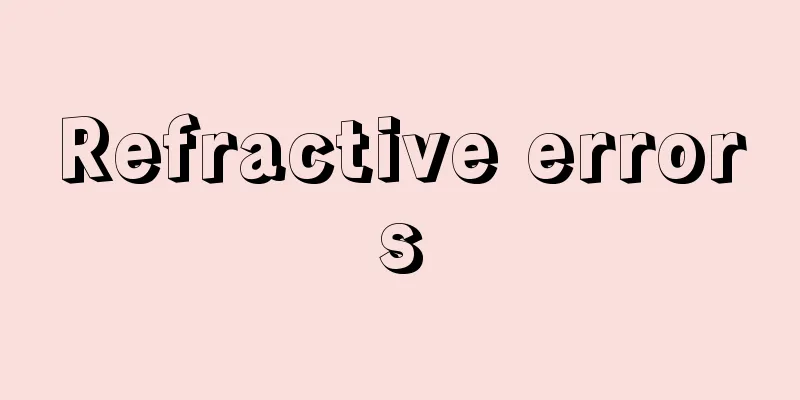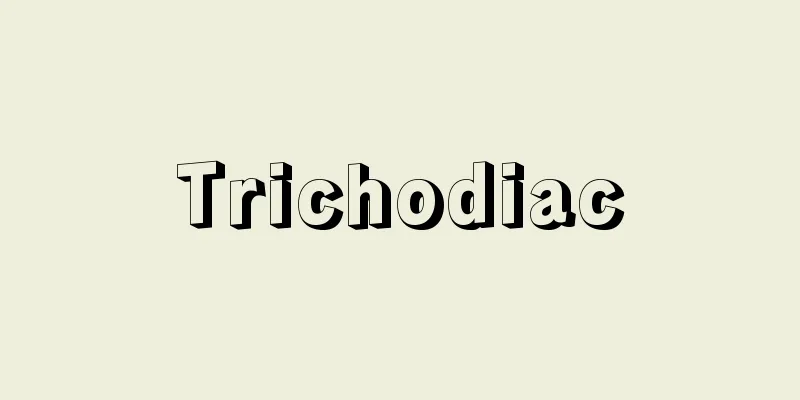Refractive errors

|
What kind of disease is it? ●Main symptoms and course of the diseaseLight entering the eye is refracted by the crystalline lens. If the refractive index is normal, the retina will also form an image properly, but if the refractive index is too large or too small, the light will not be able to focus on the retina, which is called refractive error. Refractive errors include myopia, hyperopia, and astigmatism. Myopia is when you can see close objects clearly, but cannot focus on distant objects, making them appear blurry, with the image being formed in front of the retina. There are two types of myopia: simple myopia, where vision starts to deteriorate in childhood and stops in adulthood, and pathological myopia, where vision does not stop deteriorating even in adulthood. Pathological myopia cannot be corrected with glasses and is prone to retinal detachment. In addition, there is pseudomyopia, where the ciliary muscle that focuses the eye temporarily continues to tense up during adolescence, resulting in a condition similar to myopia. Farsightedness means that you can see far away easily, but have difficulty focusing on close objects, and the image is formed behind the retina. With farsightedness, the ciliary muscles are constantly tensed to focus, which can cause eye strain and headaches. When children's ciliary muscles do not work properly, they can develop amblyopia. Astigmatism is when lines appear blurred or clear in a certain direction, or when objects appear double, and the focal point for forming an image is split into two. Most people have at least a little astigmatism. This is called physiological astigmatism, and there is no harm in leaving it untreated. However, if it is severe, it can cause amblyopia. ● Causes of the disease and how symptoms develop Myopia occurs when the length from front to back of the eyeball (axial length) is long, or when the refractive index of the cornea or lens is large. The causes are thought to be genetic and environmental. Myopia develops and progresses when working or playing that requires looking at close objects for long periods of time. When myopia appears or progresses after middle age, it may be triggered by metabolic diseases such as diabetes. Myopia can also appear as a result of the progression of cataracts. Hyperopia is caused by a short axial length of the eye or a low refractive index of the cornea or lens. Most cases are present at birth. Astigmatism occurs when the cornea curves irregularly, or when it is not a perfect sphere but has a gentle or sharp curve. Regular astigmatism occurs when the refracted light is focused in two places, while irregular astigmatism occurs when the light is not focused anywhere. Irregular astigmatism occurs when the surface of the cornea protrudes and becomes pointed, such as in a cone-shaped cornea or a corneal ulcer. EBM checks on common treatments and care [Treatment and care] Correct refraction with glasses or contact lenses [Rating] ☆☆☆☆☆ [Evaluation points] In myopia, the refractive index is too large, so the light focuses in front of the retina. Therefore, by reducing the refractive index with concave eyeglasses or contact lenses, the light can be focused on the retina. Conversely, in hyperopia, the refractive index is too small to focus on the retina, so by increasing the refractive index with convex eyeglasses, the light can be focused on the retina. This has been confirmed by highly reliable clinical research. (1)-(3) [Treatment and care] Refractive index is corrected through surgery [Rating] ☆☆☆☆☆ [Evaluation points] Refractive correction is generally performed first with glasses or contact lenses, but only when this is difficult will laser-based refractive surgery be considered. Eligible patients for the surgery are 18 years of age or older, and their myopia degree must be stable for one year. They must also be fully informed of the problems and complications of the surgery by an ophthalmologist and be satisfied with the outcome. The fact that vision can be restored through this surgery has been confirmed by highly reliable clinical studies, including long-term follow-up studies over a period of 10 years. (4)-(8) [Treatment and care] In the case of pseudomyopia, rest your eyes by looking into the distance, etc., to relieve eye strain. [Rating] ☆☆☆☆ [Evaluation Points] When you look at a nearby screen, such as a television or computer, for a long time, the ciliary muscles remain tense. In the case of pseudomyopia, the tension does not go away and a large refractive index remains, creating a state similar to that of myopia, so your eyesight will return to normal once the tension in the ciliary muscles is relieved. Looking into the distance to relieve eye fatigue is also effective. These findings have been shown in reliable clinical studies. (9) No drug therapy Overall, the most reliable treatment method at present is to first relieve eye fatigue. If your myopia is thought to be temporary (pseudomyopia), try to relieve eye fatigue by resting your eyes by looking at something far away, etc. This has been shown to restore vision to a certain extent. Glasses, etc. if it interferes with daily life If your eyesight does not return to normal even after continuing treatment to relieve eye fatigue for a certain period of time, or if the refractive error has progressed to the point where it interferes with your daily life, you will need to use glasses or contact lenses to correct it. Contact lenses are worn directly on the eyeball, so care must be taken to avoid eye problems. Many people want to wear contact lenses for cosmetic reasons, but it is best to consider whether you have the fine motor skills necessary to handle contact lenses and whether you can continue to care for them every day. Nowadays, daily disposable contact lenses are common, but wearing contact lenses can cause keratitis and conjunctivitis, so it is necessary to think about how long you wear them and how to keep them clean. Long-term progress after surgery is a future issue Surgery is indicated when glasses or contact lenses cannot correct the vision. It has now been proven, including over a 10-year long-term course, that successful refractive surgery using lasers can restore vision. However, the presence or absence of complications several decades down the line will remain to be seen until the results of future observational studies are seen. It is necessary to receive a thorough explanation from an ophthalmologist about the details of the surgery, any problems, and possible complications before deciding whether or not to undergo surgery. (1)Polse KA, Brand RJ. Contact lens effects on ametropia: a current example of the clinical trial. Am J OptomPhysiol Opt. 1981;58:281-288. Source: "EBM: A book that explains correct treatment" Information about the book "EBM: A book that explains correct treatment" |
|
どんな病気でしょうか? ●おもな症状と経過 目に入ってくる光は水晶体によって屈折します。このとき屈折率(くっせつりつ)が正常ならば、網膜もうまく像を結びますが、屈折率が大きすぎたり、小さすぎたりして網膜上でピントが合わないのが屈折異常(くっせついじょう)です。屈折異常には近視(きんし)、遠視(えんし)、乱視(らんし)があります。 近くのものははっきり見えますが、遠くのものにピントが合わず、ぼけて見えるのが近視で、網膜より手前に像が結ばれるものです。近視には、子どものころから視力が低下し、成人になって止まる単純近視、成人になっても視力低下が止まらない病的近視があり、病的近視は眼鏡で矯正できず、網膜剥離(もうまくはくり)をおこしやすくなります。このほか、思春期に一時的に目のピントを合わせる毛様体筋(もうようたいきん)の緊張が続いて近視のような状態になってしまう仮性近視(かせいきんし)があります。 遠くは見えやすいけれども、近くのものを見るときにピントが合わせにくいのが遠視で、網膜よりうしろに像が結ばれるものです。遠視の場合、つねに毛様体筋を緊張させてピントを合わせようとするため、それによって眼精疲労(がんせいひろう)や頭痛がおきたりします。子どもでこの毛様体筋がうまく働かないときには弱視になる場合があります。 特定の方向の線がぼやけて見えたり、はっきり見えたり、ものが二重に見えたりするのが乱視で、像を結ぶ焦点が二つに分かれているものです。ほとんどの人は少なからず乱視があります。 これは生理的乱視と呼ばれ、放置しておいてもさしつかえありません。ただし程度が強い場合は弱視をおこすこともあります。 ●病気の原因や症状がおこってくるしくみ 近視は、眼球の前後の長さ(眼軸長(がんじくちょう))が長い、あるいは角膜(かくまく)や水晶体による屈折率が大きいためにおこります。原因は遺伝と環境要因が考えられます。近くを長時間見続ける作業や遊びなどで近視が発症したり進行したりします。中年以降になってから、近視が現れたり進行したりする場合には、糖尿病などの代謝性の病気が引きがねになっている場合があります。また、白内障(はくないしょう)の進行に伴って近視が現れることもあります。 遠視は、眼軸長が短い、あるいは角膜や水晶体の屈折率が小さいためにおこります。ほとんどが生まれつきのものです。 乱視は、角膜のカーブが不規則に変化している場合、完全な球面ではなくゆるいカーブやきついカーブがある場合におきます。屈折した光の焦点が2カ所に分かれるものが正乱視、どこにも焦点が結ばれないものが不正乱視です。不正乱視は角膜の表面が飛び出してとがった状態になる円錐(えんすい)角膜や角膜潰瘍(かいよう)でおこります。 よく行われている治療とケアをEBMでチェック [治療とケア]眼鏡やコンタクトレンズによって屈折を矯正する [評価]☆☆☆☆☆ [評価のポイント] 近視は屈折率が大きすぎて、網膜の手前でピントが合ってしまうわけですから、凹レンズの眼鏡やコンタクトレンズで屈折率を小さくすれば、網膜上にピントを合わせることができます。遠視は逆に、屈折率が小さすぎて網膜上でピントが合わないわけですから、凸レンズの眼鏡などで屈折率を大きくして、網膜上にピントを合わせます。こういったことは非常に信頼性の高い臨床研究によって確認されています。(1)~(3) [治療とケア]手術によって屈折率を矯正する [評価]☆☆☆☆☆ [評価のポイント] 屈折矯正は、基本的にはまず、眼鏡やコンタクトレンズによって行いますが、それが困難な場合のみ、レーザーを利用した屈折矯正手術が検討の対象となります。手術の対象となるのは18歳以上で、1年間は近視の度数が安定していることが必要であり、眼科医から、手術の問題点と合併症について十分な説明を受けて納得した患者さんに限ります。この手術によって視力が回復することは、10年間にわたる長期的な経過も含めて非常に信頼性の高い臨床研究によって確認されています。(4)~(8) [治療とケア]仮性近視の場合は、遠くを見るなどして目を休め、眼精疲労をとる [評価]☆☆☆☆ [評価のポイント] テレビやコンピュータなど、近くの画面を長時間見ていたりすると、その間、毛様体筋はずっと緊張し続けます。仮性近視はその後も緊張がとれずに大きい屈折率が残って近視と同じような状態になっているので、毛様体筋の緊張がなくなれば元の視力が戻ります。遠くを見て眼精疲労をとることも効果があります。これらは信頼性の高い臨床研究によって示されています。(9) 薬物療法はありません 総合的に見て現在もっとも確かな治療法 まずは眼精疲労をとる 一時的な近視(仮性近視)と考えられる場合は、遠くを見るなどして目を休め、眼精疲労をとるよう努めます。これである程度視力が回復することがわかっています。 日常生活に支障をきたすときは眼鏡などを ある期間、眼精疲労をとるようなケアを続けても視力が戻らない場合、その屈折異常が日常生活に支障をきたすほどまで進んでしまった場合には、眼鏡やコンタクトレンズを用いて矯正する必要があります。 コンタクトレンズは眼球に直接装着するため、目の障害がおこらないように気をつかう必要があります。美容上コンタクトレンズにしたいという人も少なくありませんが、コンタクトレンズを扱えるだけの細かな手指の動きができるか、手入れを毎日続けられるかという点を考慮したほうがよいでしょう。 現在では毎日使い捨てられるコンタクトレンズも普及していますが、一般的にはコンタクトレンズを装着することで角膜炎や結膜(けつまく)炎をおこすこともあり、装着時間の長短や清潔を保つことへの配慮も必要です。 手術後の長期的な経過は今後の課題 眼鏡やコンタクトレンズでも矯正できない場合、手術の適応となります。現在では、レーザーを利用した屈折矯正手術がうまく行われると視力が元に戻ることは、10年間にわたる長期的な経過も含めて実証されています。ただし、さらに数十年後の合併症の有無などは、これからの観察研究の結果を見なければわかりません。眼科医から、手術の内容や問題点、合併症の可能性などについて十分な説明を聞いたうえで、手術を受けるかどうか決める必要があるでしょう。 (1)Polse KA, Brand RJ. Contact lens effects on ametropia: a current example of the clinical trial. Am J OptomPhysiol Opt. 1981;58:281-288. 出典 法研「EBM 正しい治療がわかる本」EBM 正しい治療がわかる本について 情報 |
<<: Refractometer - Refractometer
Recommend
"Egypt and the Modern History" - Egyptian History
… Yoshida was accompanied by Furukawa Nobutaka of...
Ito Suketomo
1812-1874 A daimyo in the late Edo period. Born o...
Nierembegia repens (English spelling)
… [Munemin Yanagi]. … *Some of the terminology th...
Leased territory
It refers to the part of another country's te...
Interface texture
...In the five-tone notation, the pitch of the &q...
Well draining - Idosarai
...In the ghost story of "Banchō Sarayashiki...
Horseman - Grandson
A person whose occupation involves pulling packho...
Rokuzan Ogiwara
⇒ Morie Ogiwara Source: Kodansha Digital Japanese ...
Crassulaceae
...Used for potted plants or flower beds. [Crassu...
Side window
…window [Lighting method and features] They are p...
Abhinavagupta
An Indian philosopher active in the 10th and 11th ...
Fukui Domain
A clan that ruled over the Fukui region of Echize...
Armagne - Armagne
…A region located almost in the center of Europe....
The Story of Hong Kildong
A Hangeul novel from the Yi Dynasty in Korea. Auth...
Ixia paniculata - Ixia paniculata
...It blooms around May and comes in a variety of...









